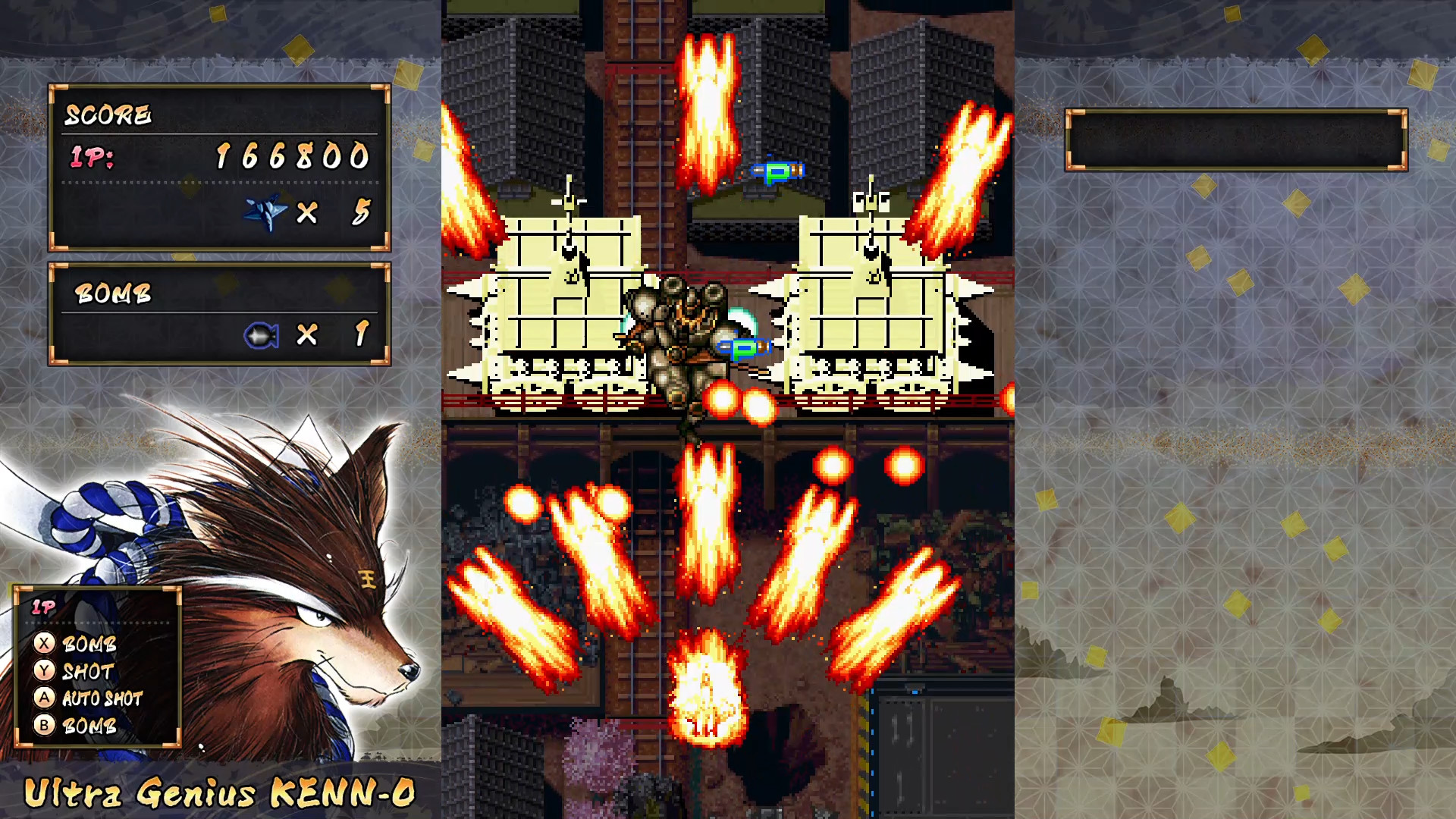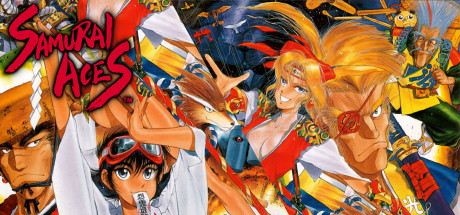Samurai Aces
Release Date: May 20, 2020
Samurai Aces (original arcade 1993; reissued May 20, 2020) lands as a compact, furious display of early Psikyo design. Its re-release arrived just as the industry faced pandemic-era shifts, digital events, and a renewed passion for arcade revivals. Therefore, the 2020 climate favored small, sharp games that worked well online — and Samurai Aces fits perfectly as an arcade shooter rebuilt with modern options and global leaderboards.
What Samurai Aces Is
At its core, this is a vertical-scrolling, score-focused shooter packed with early ’90s Japanese flair — samurai, ninjas, mechs, and over-the-top bosses. Moreover, it marks the start of Psikyo’s trademark “quick, high-risk” bullet patterns later known as Psikyo Bullets. If you enjoy modern bullet-dodging shooters, this is where that tradition began.
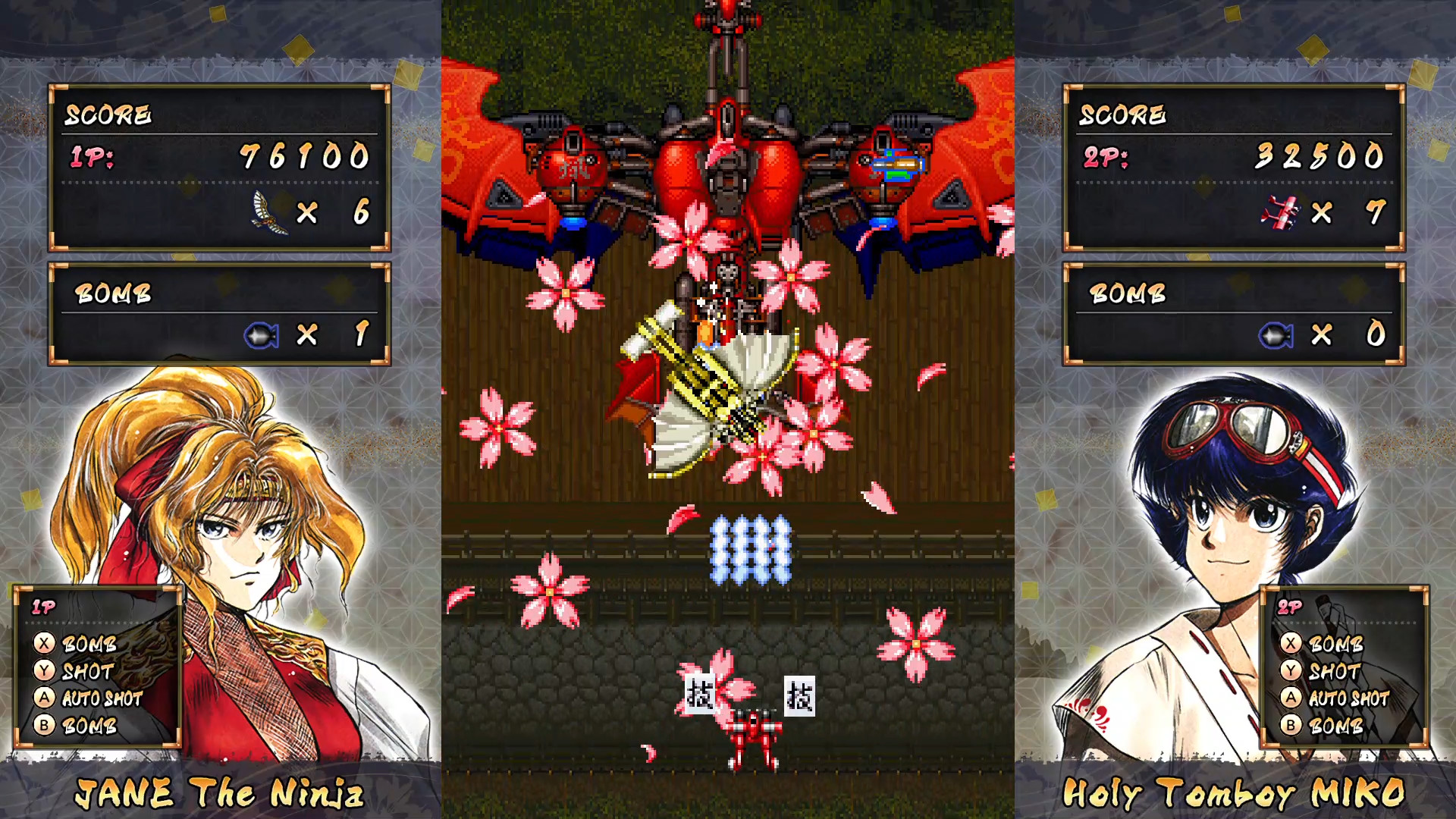
Story / Characters
The story stays light and arcade-first, yet character bios add flavor instead of full arcs. Playable pilots include:
- Jane — a blonde kunoichi (stealthy, anime-styled fighter)
- Tengai — a turbo monk with strong forward fire
- Ken-oh-maru — a super-genius dog, the mascot pilot
- Koyori — a daring maiden with risky tools
- Aine — a macho samurai, powerful and direct
- Gen-nai — a crafty machinist with layered attacks
Each pilot flies a unique plane with distinct shot styles: focused beams, wide spreads, or hybrids. Consequently, the game favors character personality over plot depth, leaving the motivation to player skill and scoring.
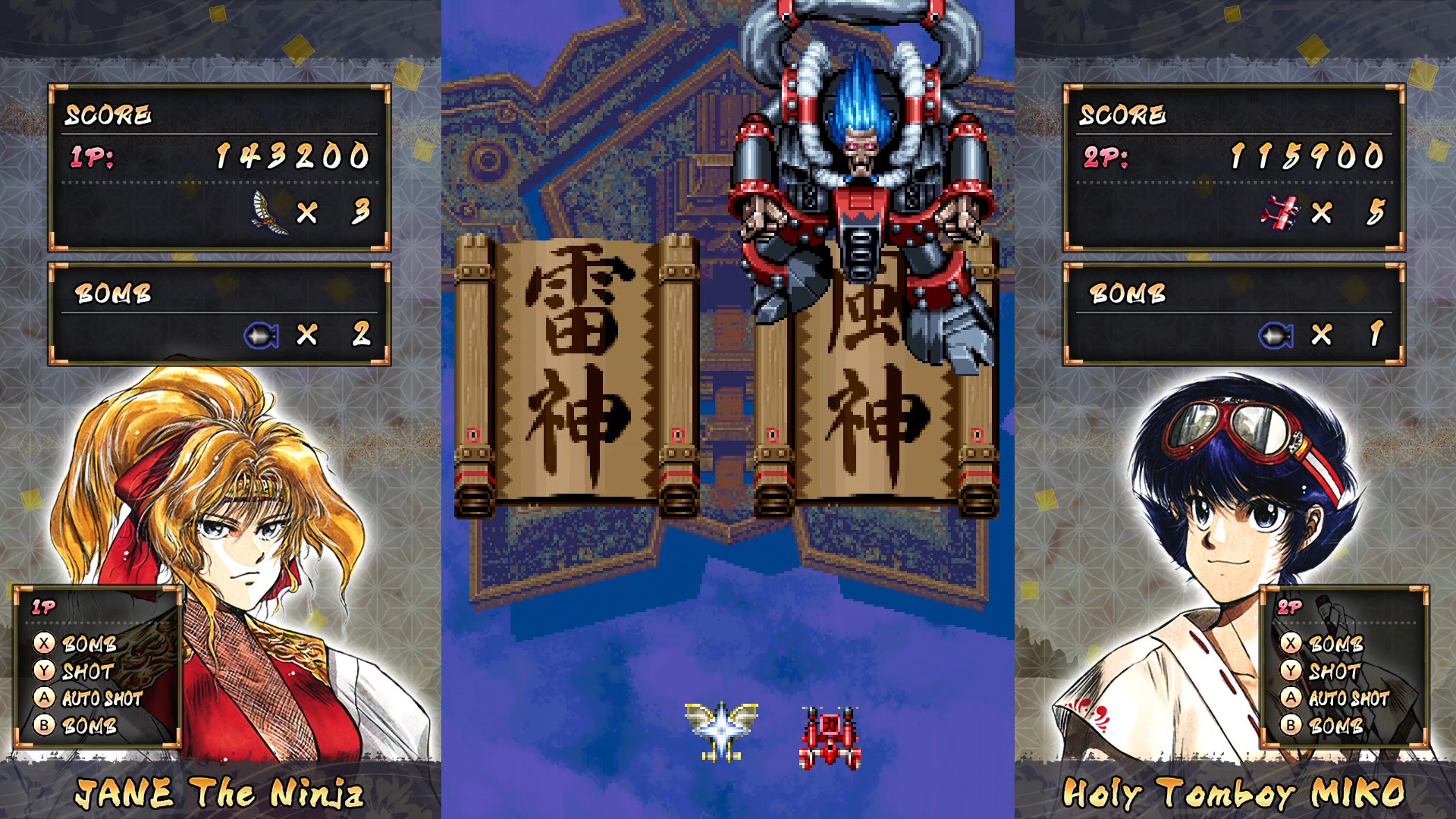
Gameplay Mechanics & Modes
The systems are simple yet rewarding, balancing challenge and accessibility:
- Vertical stages with seven difficulty levels and occasional randomization for replay value.
- P power-ups boost your main shot, while B bombs clear bullets and give breathing space.
- Super Shot: a charged move that delivers heavy boss damage.
- Score Attack: a mode with fixed difficulty and lives for leaderboard play.
- Options: adjust lives (1–9), continues (0–unlimited), remap controls, change screen layout, or apply CRT filters.
- Online Rankings: global leaderboards that encourage replay and optimization.
Because these features work together smoothly, every run feels like a test of both reflexes and strategy.
Visuals & Audio
The game proudly wears its retro roots. Sharp pixel art, anime-inspired characters, and vivid colors dominate every screen. In addition, sprites remain crisp, helping players read patterns even amid chaos. Bosses telegraph their attacks clearly but still demand quick thinking and precision.
Meanwhile, the soundtrack matches that pace with pulsing chiptune beats and bursts of traditional Japanese instruments. As a result, the music keeps adrenaline high and complements the high-speed action perfectly.
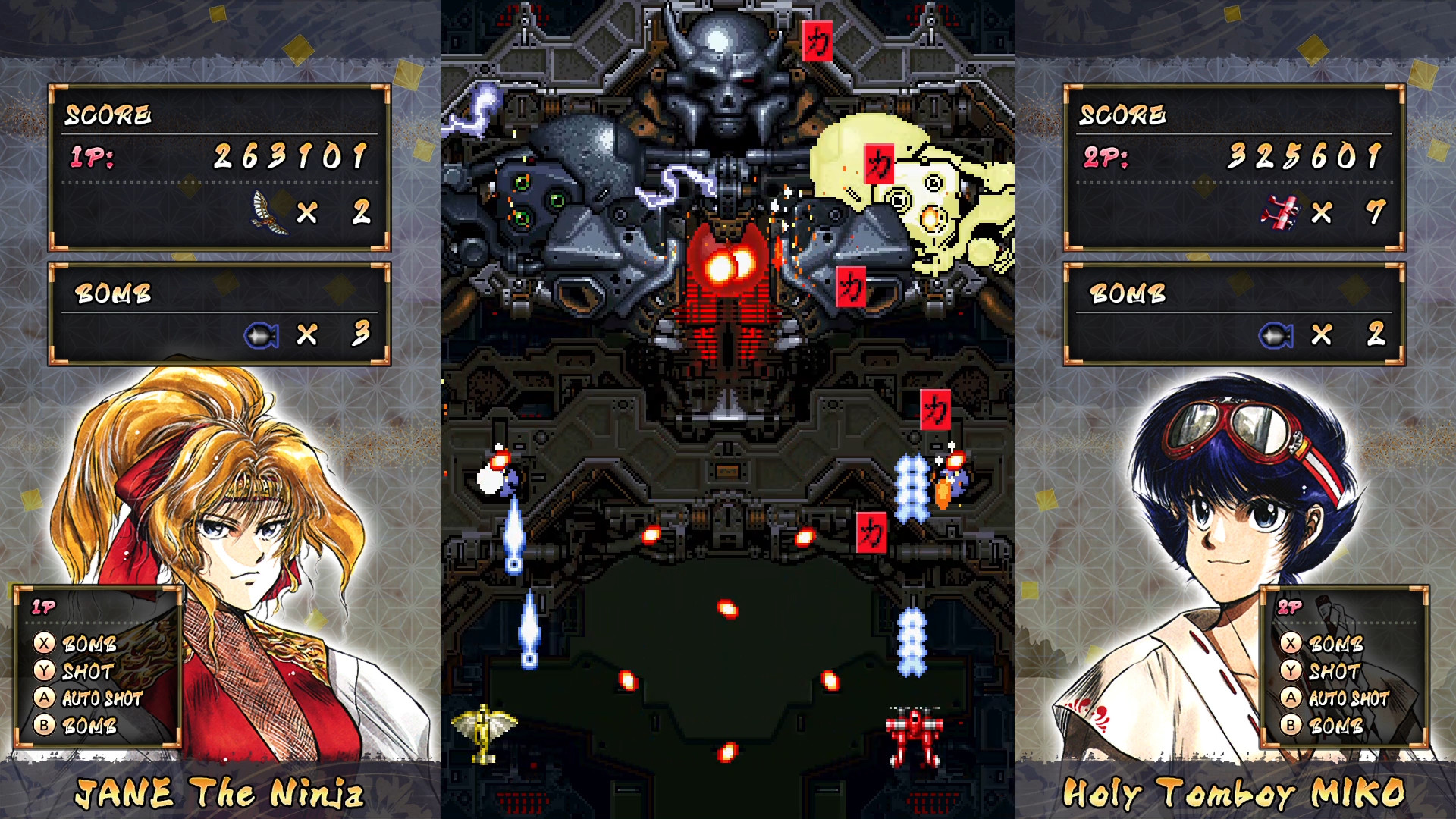
Why It Matters — Psikyo’s Roots & Industry Impact
Samurai Aces shows Psikyo’s foundation. It shaped the fast bullets, tight hitboxes, and punishing boss design that define the studio’s later classics. For modern players, it’s a reminder that many shmup traditions were built here, refined through decades of arcade play.
Community Feedback & Rating Analysis
All-Time Reviews: 93% Positive (45 total)
Players love its tight controls, satisfying scoring, and authentic arcade feel. Many praise the reissue for keeping history alive while adding conveniences like difficulty tweaks and online rankings.
Critics note the thin story and few extra modes. Some find the pace unforgiving, while others wanted richer extras like replays or detailed tutorials. Most agree, though, that the gameplay itself shines — pure, demanding, and rewarding.
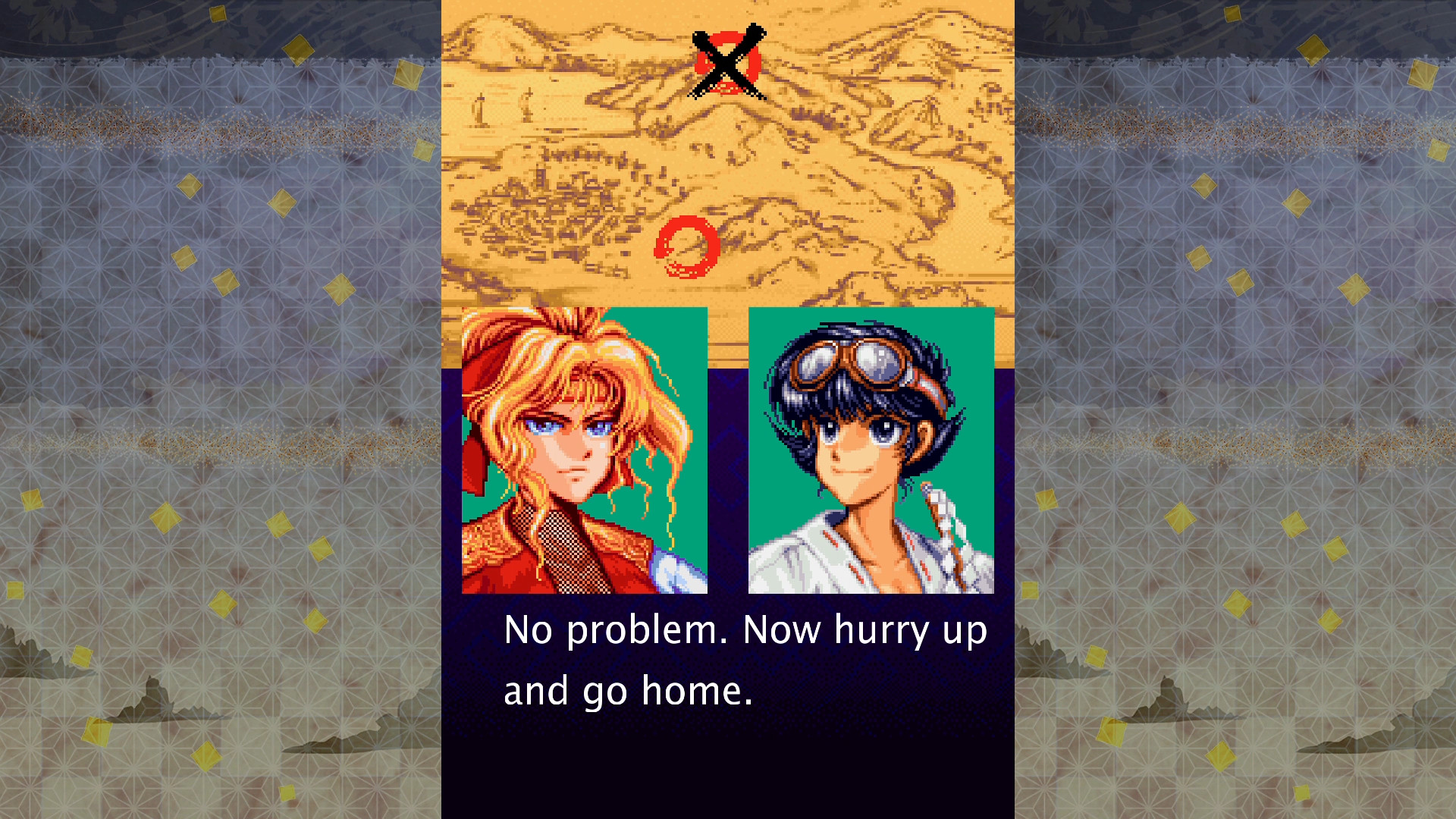
Strategies & Competitive Tips (PlayerProX Tactical Notes)
- Pick your plane wisely: wide shots help with survival and item grabs; focused planes melt bosses faster.
- Bomb with purpose: save bombs for critical boss patterns or last-second escapes — every bomb spent lowers potential score gains.
- Manage power-ups: collect P-items early to sustain damage and unlock super shots.
- Study demos: the attract mode teaches patterns; memorize them.
- Use vertical mode: it sharpens your awareness and mimics true arcade play.
- Score Attack mindset: focus on consistency — clean runs, precise bomb use, and chain scoring. Record runs for analysis.
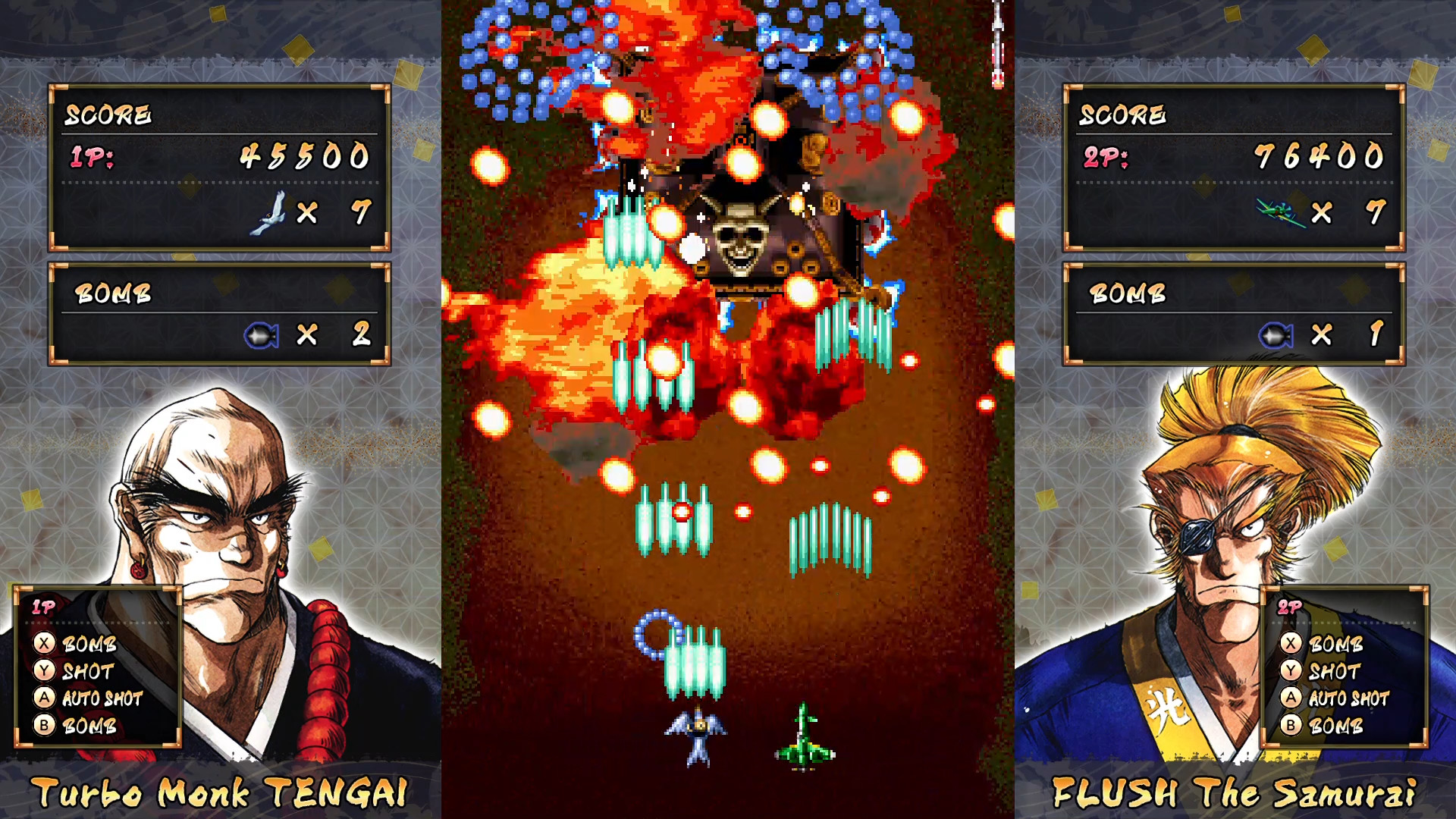
Strengths & Weaknesses
Strengths: Tight controls, thrilling scoring system, authentic Psikyo spirit, strong difficulty options, and meaningful leaderboard goals.
Weaknesses: Shallow story, few modes, retro visuals may deter players used to modern polish, and a steep learning curve.
Who Should Play
If you crave classic arcade shooters, thrive under pressure, and love leaderboards, this is for you. If you prefer deep stories or long single-player campaigns, it might feel too barebones.
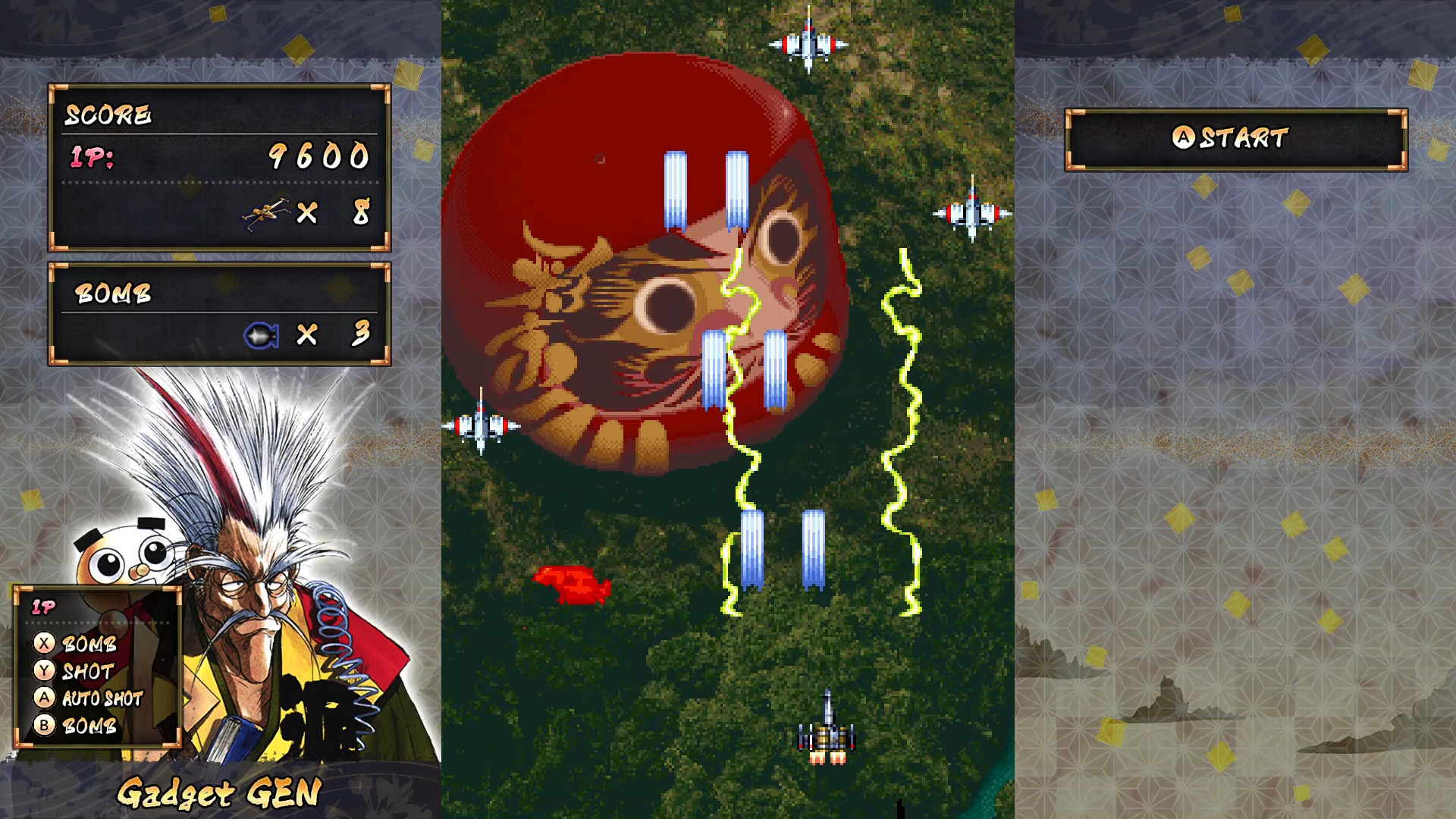
Final Thoughts
Samurai Aces stands as both a historic landmark and a timeless challenge. The 93% approval rate proves that its precision and intensity still captivate players. As the seed of Psikyo’s style, it remains fast, fierce, and endlessly replayable — a pure test of reflex and focus.
Pro Tip: Start with mid-range difficulty, two or three lives, and unlimited continues while learning. Then, move to Score Attack once you’re ready to chase rankings.
